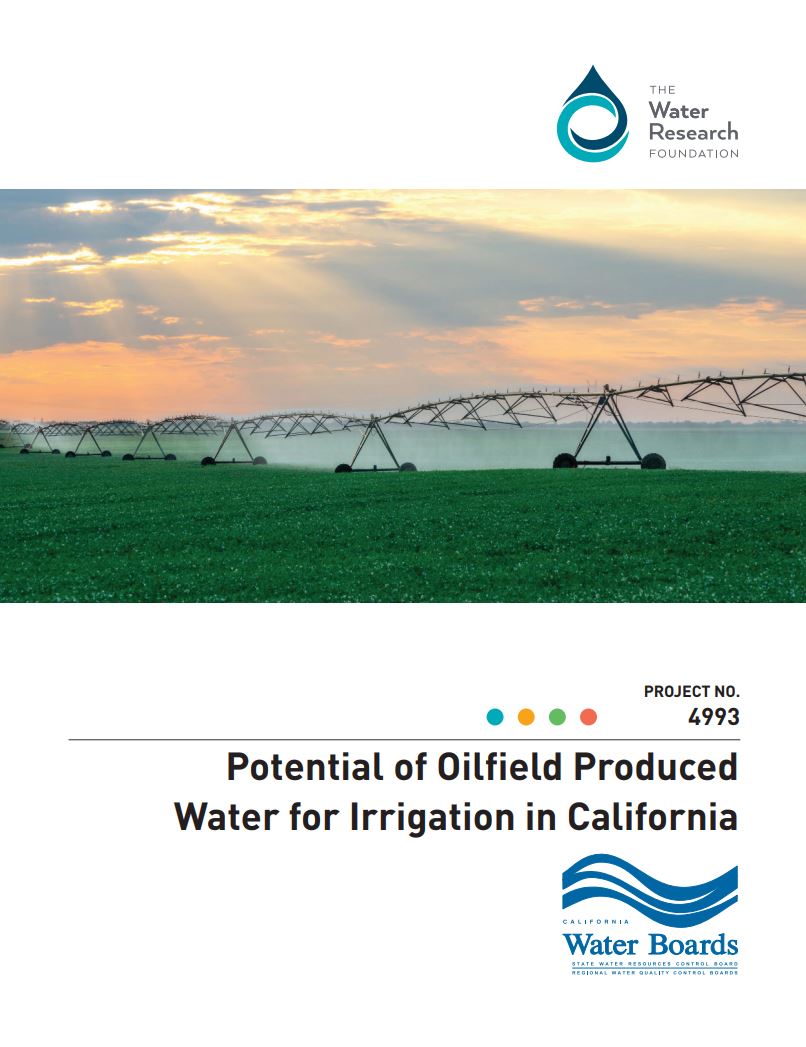Potential of Oilfield Produced Water for Irrigation in California

Potential of Oilfield Produced Water for Irrigation in California
View and download the report and a link to the geospatial model on the Water Research Foundation website here. (You will be required to create a free account.)
Overview
The project has two outputs:
- Evaluating Title 22 Recycled Water Regulations as a template for OPW reuse; and
- Creating a geospatial model and interactive map of the potential areas for OPW reuse.
The report delves into the evaluation of Title 22 Recycled Water Regulations as a policy template for OPW reuse. This comparison provides critical insights into monitoring, regulating, and managing alternative water supplies and the unique challenges posed by OPW. The project also developed an interactive geospatial model that provides decision-makers with a tool for evaluating potential areas for OPW reuse in California.
Addressing public concerns and informational gaps about the safety and sustainability of OPW for irrigation, the report aligns itself with two critical objectives. First, it critically evaluates the existing protective measures in place to protect public and environmental health. Second, it underscores the importance of developing a regulatory framework for OPW reuse, mirroring the best practices adopted in California’s recycled water regulations.
The report serves as a starting point to help decision-makers better understand opportunities and risks of increasing use of OPW to address California’s water scarcity challenges. Through its findings and interactive map, it sets the stage for the broader application and regulation of OPW reuse for irrigation, contributing towards a sustainable future for California’s agriculture.

